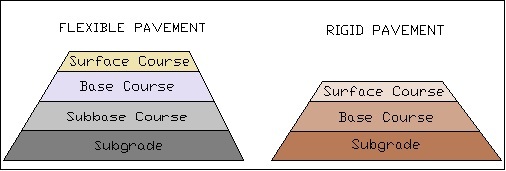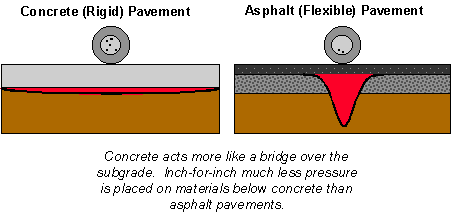Flexible and Rigid Pavement
Any ground surface that you can step on which carries a considerable amount of weight or load is called a pavement.
Pavements are primarily constructed for use by vehicles and pedestrians, transferring the load from the upper surface to the natural soil. The earliest record of the first constructed pavements is from the 4000 BC.
They consist of stone paved streets or timber roads, with roads of the earlier times dependent on stone, gravel and sand for construction. Road and pavement construction has evolved.
There are two broad categories that pavements can fall into: flexible pavement and rigid pavement. How is the one different from the other?

Flexible pavements are those consisting of a mixture of asphaltic or bituminous material and aggregates placed on a bed of compacted granular material of appropriate quality in layers over the subgrade. Its design is based on the principle that a load of any magnitude diminishes as the load is transmitted downwards from the surface. The load spreads over an increasingly larger area, which carries it deep enough into the ground through successive layers of granular material. This is why materials with high degree of strength are used at or near the surface without the need for steel reinforcement.





















